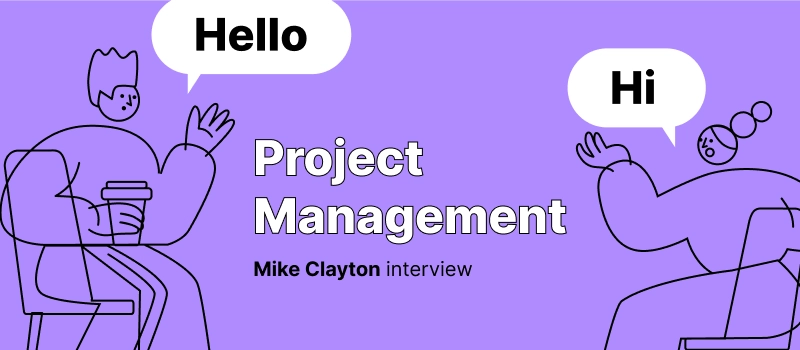
In the realm of project management, effective scheduling is a cornerstone of success.
From small-scale endeavors to large, complex projects, the ability to plan, organize, and execute tasks within defined timeframes is crucial.
Project scheduling techniques offer a roadmap to guide teams toward achieving milestones and goals via
• maximizing resource utilization and minimizing wastage,
• identifying potential risks and uncertainties early in the project lifecycle, allowing for proactive risk management strategies,
• facilitating better communication among team members, stakeholders, and clients.
In this blog post, we’ll explore 10 popular project scheduling techniques, their pros, cons, and applications.
Key Project Scheduling Techniques
These techniques will enhance operational efficiency and contribute to improved collaboration and communication within your team.
Gantt Charts
- Planning project timelines
- Tracking task completion
- Client communication
A Gantt chart visualizes a project schedule as horizontal bars representing tasks located along the timeline, indicating the duration of each task. The chart also displays dependencies between tasks and project milestones.
It helps stakeholders understand the project plan at a glance and lets managers identify critical paths and visualize resource availability, preventing overallocation or underutilization.
Despite their popularity, Gantt charts can get unwieldy when applied to large projects with numerous tasks and dependencies, as managing and updating them will take loads of time.
Critical Path Method (CPM)
- Preventing resource conflicts
- Schedules optimization
- Performance monitoring
The Critical Path Method (CPM) uses a network diagram with nodes and arrows to visualize the sequence of tasks, their dependencies, and the critical path — the longest sequence of dependent tasks that determines the minimum duration of the project.
With this method, you will be able to pinpoint tasks that must be completed on time to prevent delays in the project’s overall timeline and prioritize resources and efforts where they are most needed.
CPM also helps in optimizing project timelines by identifying non-critical tasks that can be delayed without affecting the overall project duration.
Besides that, it facilitates risk management by highlighting potential bottlenecks, delays, and areas of uncertainty in the project schedule.
The only challenge is that you should be very careful when establishing task dependencies to avoid misleading connections, impacting the accuracy of the critical path and overall project timeline.
Project Evaluation and Review Technique (PERT)
- Risk analysis
- Resource optimization
This technique involves linking tasks and establishing the flow of your schedule. In common with CPM, you need to determine all tasks involved in your project and organize them logically within project milestones.
Your timing calculations will rely on:
• Optimistic timing
• “Most likely” timing
• Pessimistic timing
By incorporating optimistic, pessimistic, and most likely time estimates for each task, you will calculate the project’s expected duration and identify critical paths based on statistical analysis.
While PERT may provide a more realistic view of project timelines than deterministic scheduling methods, the selection of optimistic, pessimistic, and most likely time estimates for tasks still involves a degree of subjectivity, which can introduce bias and impact the accuracy of your project schedule.
PERT can also be complex to implement and interpret, especially for teams unfamiliar with probabilistic time estimates and statistical analysis, leading to potential challenges in project execution.
Kanban
- Software development projects
- Maintenance and support projects
- Marketing
Kanban, which translates to “visual signal” or “card” in Japanese, revolves around visualizing work, limiting work in progress (WIP), and optimizing workflow efficiency.
Utilizing a Kanban board—a visual representation of work stages and tasks—you will seamlessly track the status of work items, identify bottlenecks, and maintain a steady flow of work through the system.
Kanban’s adaptive nature also allows teams to swiftly respond to changing priorities and requirements, making it an ideal choice for projects characterized by evolving scope and dynamic environments.
However, the system’s increased focus on flexibility and responsiveness may lead to long-term planning and forecasting challenges, especially in projects requiring detailed upfront scheduling.

Agile Scheduling
- Product development
- New product launches
- Marketing
Agile scheduling is a project management approach that emphasizes flexibility, collaboration, and iterative delivery.
Rooted in the Agile methodology, it prioritizes customer satisfaction, welcomes changing requirements, and promotes adaptive planning.
Breaking projects into smaller, manageable iterations allows teams to respond to evolving needs and deliver incremental value throughout the project lifecycle.
Unfortunately, agile scheduling is not the best choice when it comes to long-term planning and forecasting due to its focus on short iterations and evolving requirements, potentially impacting predictability and resource allocation in complex projects.
Resource Leveling
- Construction projects
- Manufacturing processes
- Infrastructure upgrades
Resource leveling is a project scheduling technique that aims to smooth out fluctuations in resource utilization by adjusting task start and end dates without altering the project’s critical path.
This technique will let you create a stable project schedule by changing resource assignments, minimizing schedule disruptions, and improving predictability in project delivery timelines.
However, using this technique may lead to an extension of the project duration as task start and end dates are adjusted to accommodate resource constraints, potentially impacting project deadlines and time-to-market goals.
Besides that, balancing resource assignments across tasks in resource-constrained environments can introduce complexity in task sequencing, requiring careful consideration of dependencies and task priorities to maintain project continuity.
Critical Chain Scheduling
- Consulting Engagements
- Engineering Projects
- Research and Development
Critical Chain Scheduling is a project management methodology that focuses on determining the project’s overall duration.
This method aims to mitigate uncertainties, reduce project lead times, and improve project delivery performance by incorporating buffers to account for task variability and resource constraints.
Unfortunately, managing these buffers, accurately estimating buffer sizes, monitoring buffer consumption, and adjusting buffers in response to changing project conditions requires substantial training and a thorough understanding of project dynamics, task dependencies, and resource constraints.
Monte Carlo Simulation
- Construction projects
- Healthcare
- Financial planning
Monte Carlo simulation is a computational method that generates multiple iterations of random variables to model and simulate the possible outcomes of a project based on probabilistic inputs.
By incorporating uncertainties, risks, and variability into project schedules, Monte Carlo simulation enables project managers to assess the likelihood of meeting project deadlines, allocate resources effectively, and optimize project performance under varying scenarios.
This technique facilitates comprehensive risk analysis by simulating multiple project scenarios and evaluating the impact of uncertainties, risks, and variations on project schedules,
The only big drawback of the method is that interpreting simulation results and translating probabilistic forecasts into actionable insights can pose challenges for project managers unfamiliar with probabilistic modeling concepts or statistical analysis techniques.
Earned Value Management (EVM)
- IT Projects
- Engineering Projects
- Government Projects
Earned Value Management (EVM) is a complex project management methodology that combines project scope, schedule, and cost data to measure project performance against planned objectives.
By comparing the value of completed work (earned value) with the incurred costs and planned costs (planned value), EVM provides project managers with insights into project efficiency, schedule adherence, and performance variances.
EVM facilitates effective cost control by monitoring project costs in real-time, analyzing cost variances, identifying cost overruns or underruns early, and implementing corrective actions t
At the same, the system strongly relies on accurate data inputs, detailed work breakdown structures (WBS), and comprehensive project schedules and requires meticulous data collection, validation, and integration processes to ensure the calculations’ reliability.
Resource Smoothing
- Construction Projects
- Software Development Projects
- Marketing Campaigns
Resource smoothing is a technique that focuses on optimizing resource allocations, leveling workloads, and minimizing resource fluctuations to achieve a balanced and sustainable project schedule.
By strategically adjusting project activities’ start and finish dates within their total float while adhering to resource constraints, resource smoothing aims to mitigate resource overloads, prevent idle periods, and ensure efficient resource utilization throughout the project lifecycle.
The technique is rather similar to resource leveling. However, resource smoothing focuses more on reducing resource usage fluctuations than minimizing project duration.
That is why sometimes adjusting activity start and finish dates for resource smoothing purposes may impact the project’s critical path, potentially altering project timelines, milestone deadlines, and overall project completion dates.
Leading Your Team to Success with Effective Project Scheduling
Equipped with one or a few of the above project scheduling techniques, you will easily become the enforcer of your project plan.
Just remember to evaluate all the factors involved in your project so that your team members can understand and follow the schedule.
Time tracking software, like actiTIME, offers a platform where you can establish your project schedule with all tasks, resources, and dependent variables considered and share this data with your team.
- Gain valuable insights into the actual duration of tasks and make accurate estimates for future projects.
- Spot the dependencies between tasks to identify critical paths and potential bottlenecks.
- Tailor the project schedule to meet the specific needs of your industry.
- Detect the tasks that are taking longer or shorter than expected and adjust your schedule accordingly.
- Allocate resources effectively based on your team’s availability and workload.
See how time tracking will guide your project schedule management process with our actiTIME free trial!

















































